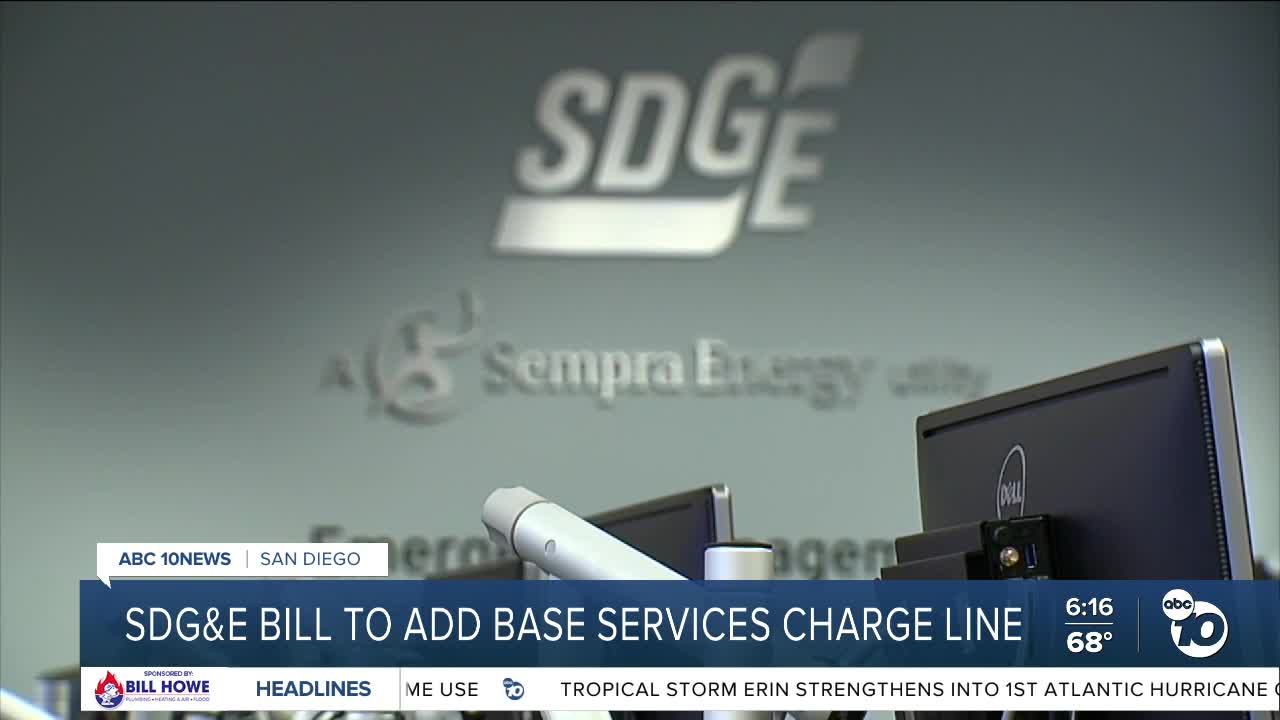SAN DIEGO (KGTV) — Starting in October, you'll see a monthly $24 "Base Service Charge" on your SDG&E bill. So what is it?
It's part of the implementation of Assembly Bill 205, signed into law back in 2022, and the new billing structure for residential electric customers that was approved by the California Public Utilities Commission in May 2024.
SDG&E said the fee is part of the state's effort to move to 100% clean energy and help create transparency on your utility bill.
"This is not an additional charge on your bill," said Anthony Wagner, the communications manager with SDG&E. "These costs were previously included in the price per kilowatt on the delivery portion of your bill. Now, they’re going to be broken down with their own line item called base services charge. Because this is a reallocation cost, the attention has been to create more transparency around your bill."
While Wagner's explanation sounds simple, some advocacy groups are concerned about whether that charge will increase and why.
"The base service charge is absolutely going to be a profit making machine for SDG&E, and by the way, we call it a utility tax because that's actually what it is," said Dave Rosenfeld with Solar Rights Alliance.
"Basically people who don't use a lot of electricity, most likely, their bills are going to go up," said Rosenfeld.
Wagner disagrees, saying this new change may actually decrease bills for the average homeowner.
"By about 10% or 5 cents per kilowatt hour on the delivery portion of your bill," said Wagner. "But the intention of the base services charge has always been to help support California's clean energy goals by making it more affordable to use electric technologies like an electric vehicle or an electric appliances instead of the later."
Wagner said SDG&E will not profit from this reallocation of charges.
They said the new base service charge isn't an extra fee on your bill, and that the costs covered by this fee were previously included in the kilowatt-hour price. Those costs include equipment, like transformers and meters, as well as the utility's customer service.
For most customers, that fee will be $24. SDG&E says that customers enrolled in FERA & qualifying DRAH customers will see that charge come out to $12. Customers enrolled in CARE will see a $6 base service charge.

SDG&E says that now that the base service fee is separate, you'll see about a 10% decrease, or roughly 5 cents, in your per-kilowatt-hour price.
Solar customers will also see this base service fee on their bill. SDG&E says this fee covers the infrastructure solar customers rely on to draw electricity from the grid, and send it back to the grid.
In a press release, San Diego County District 5 Supervisor Jim Desmond called the fee a "utility tax".
"SDG&E will be slightly lowering electricity rates to offset the new fixed charge. But when SDG&E’s energy rates routinely rise faster than inflation and have increased 82% over the past ten years, a small decrease does very little to help people’s wallets," Desmond's release says. "Californians are already paying the second-highest energy prices in the country, and now this new fee guarantees you will pay more, no matter how much or how little power you use."
The change isn't just affecting SDG&E customers; it's affecting customers of the state's three largest investor-owned utilities, including SDG&E, Pacific Gas and Electric, and Southern California Edison.





